
Wandering Stars
Scroll for prep
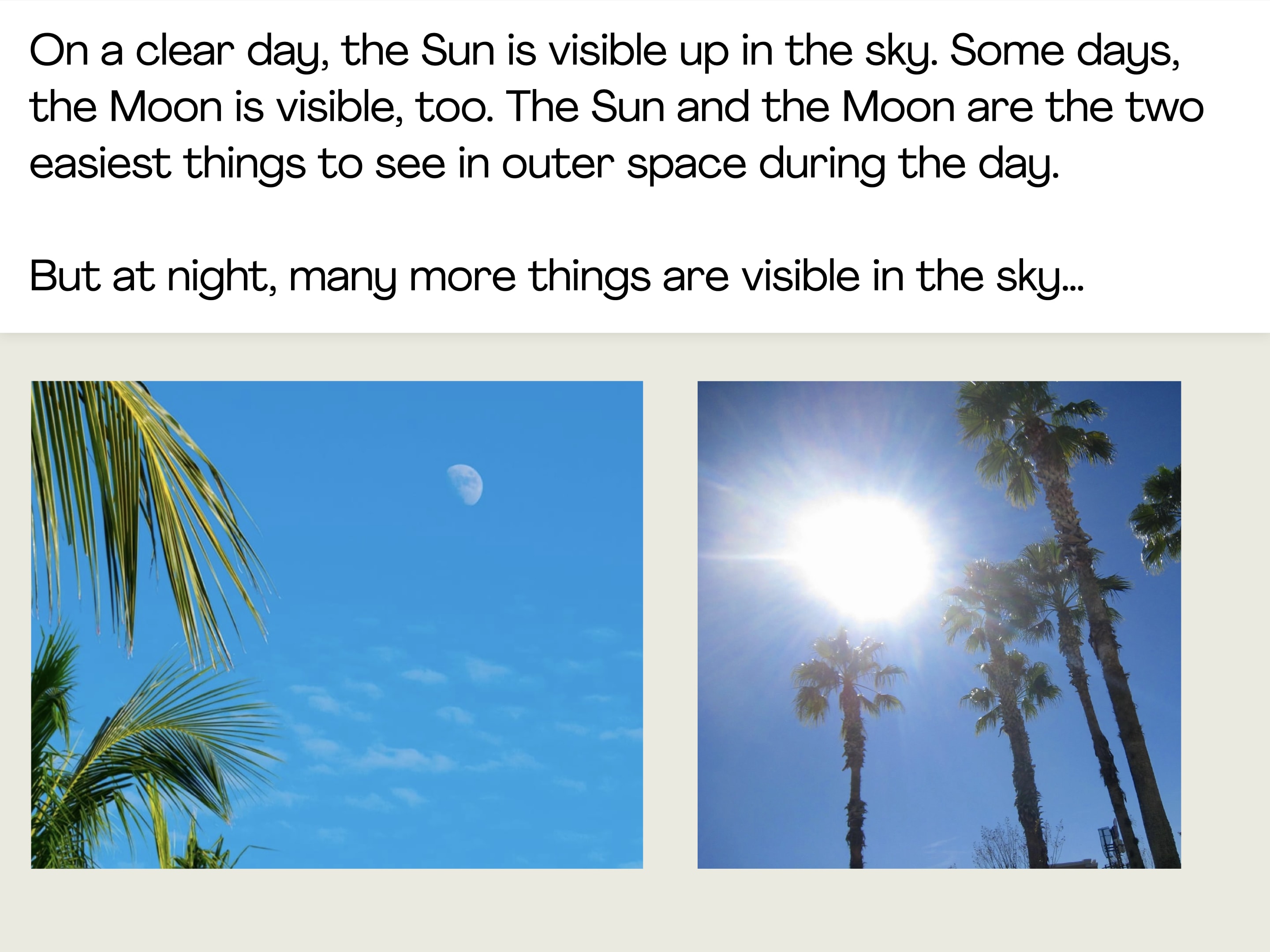
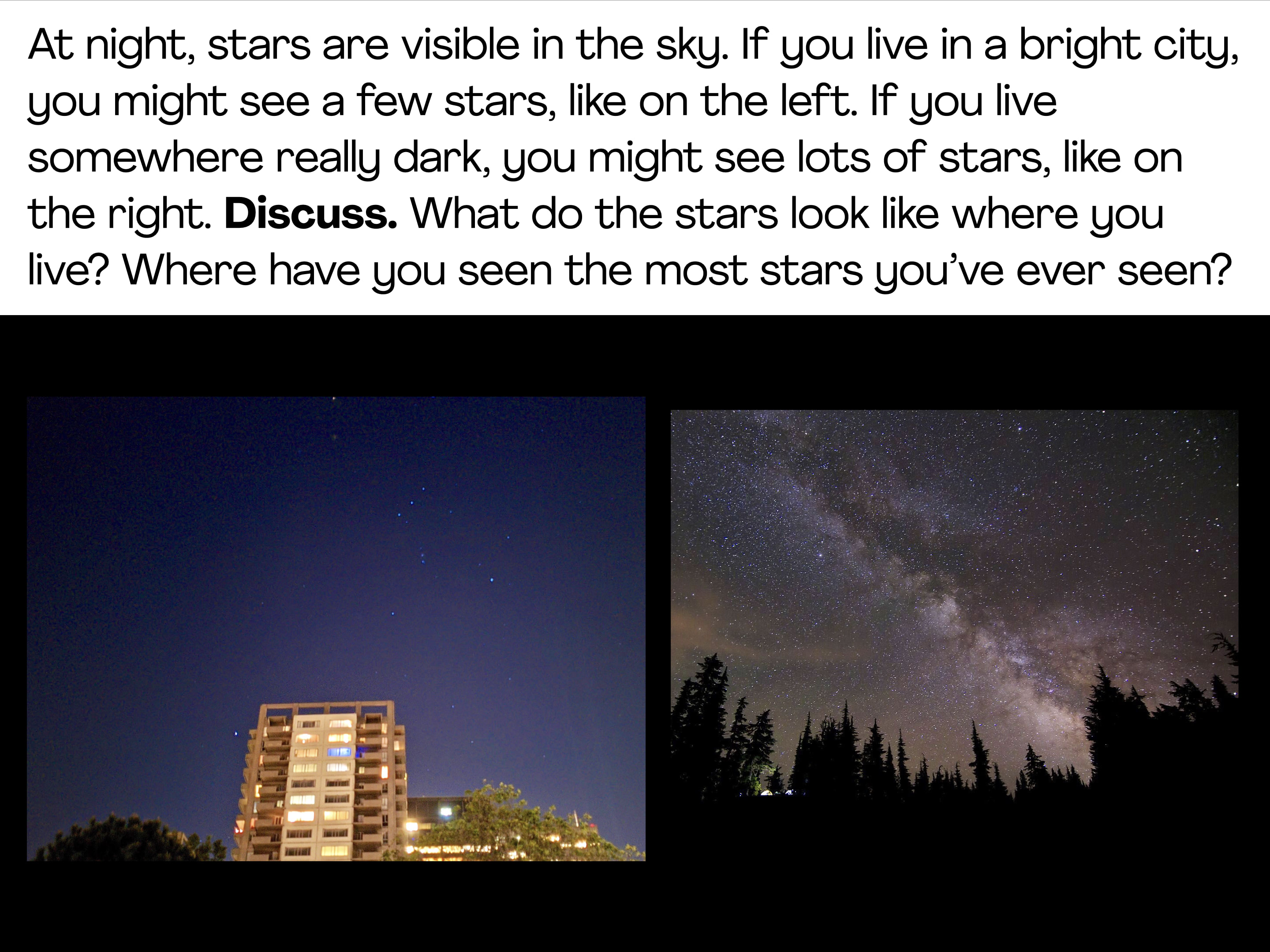

Please wait…
This video is having trouble loading. You may have lost your Internet connection.
Step 1: Click to Reload this page
Step 2: Click to
Try our other video player
Step 3: Contact your teacher if trouble persists.
Or,
dismiss this message.
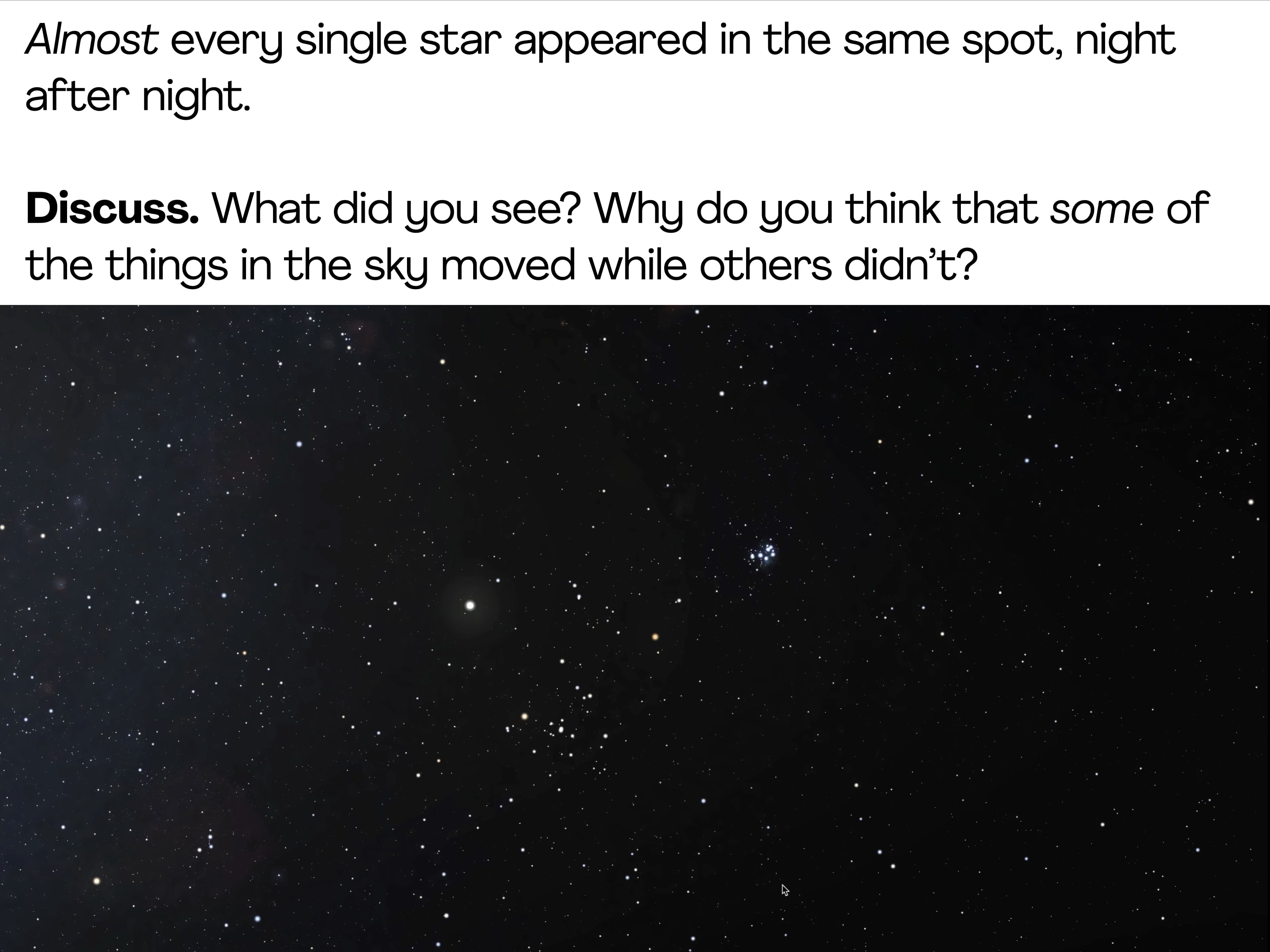
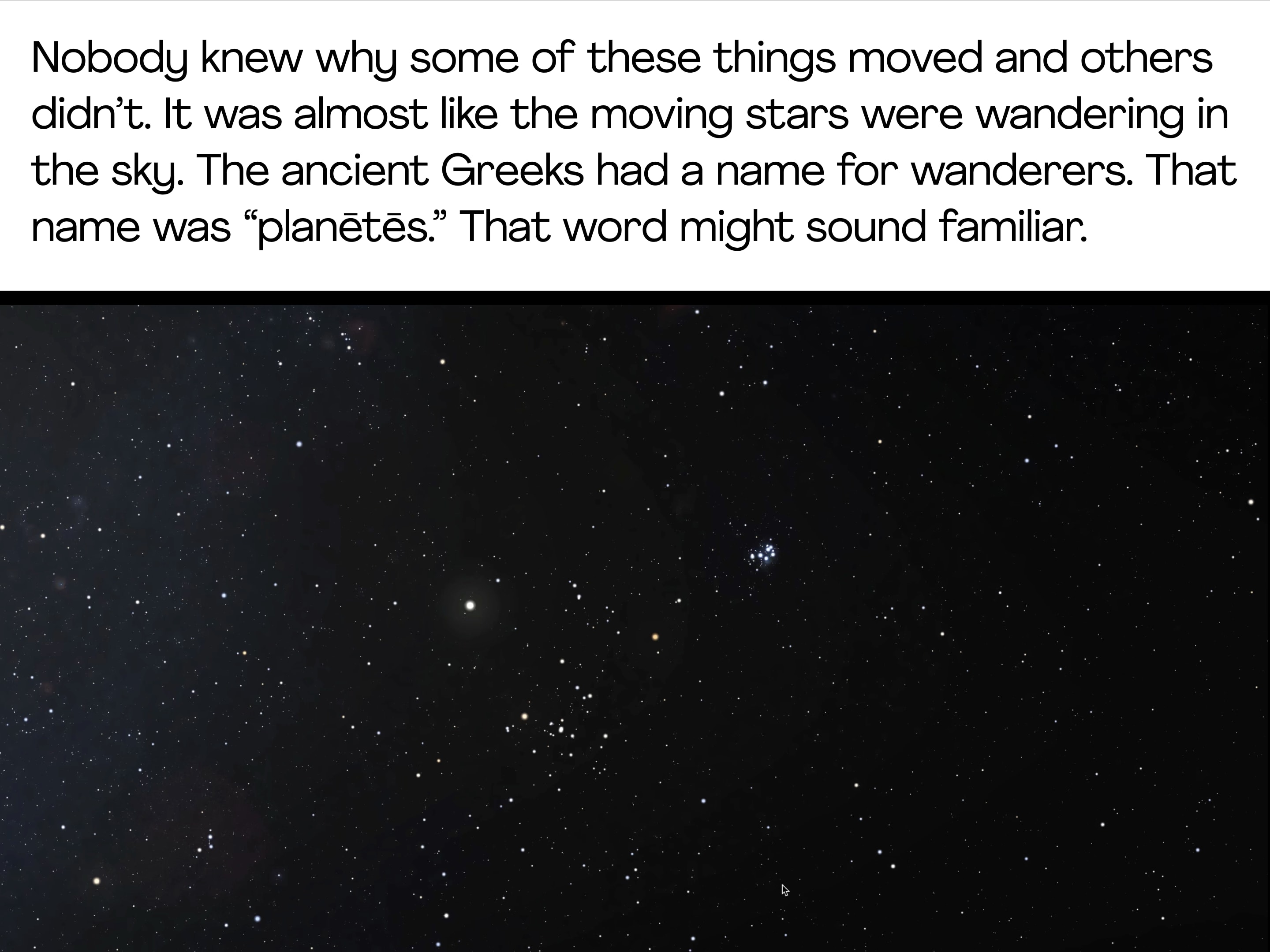
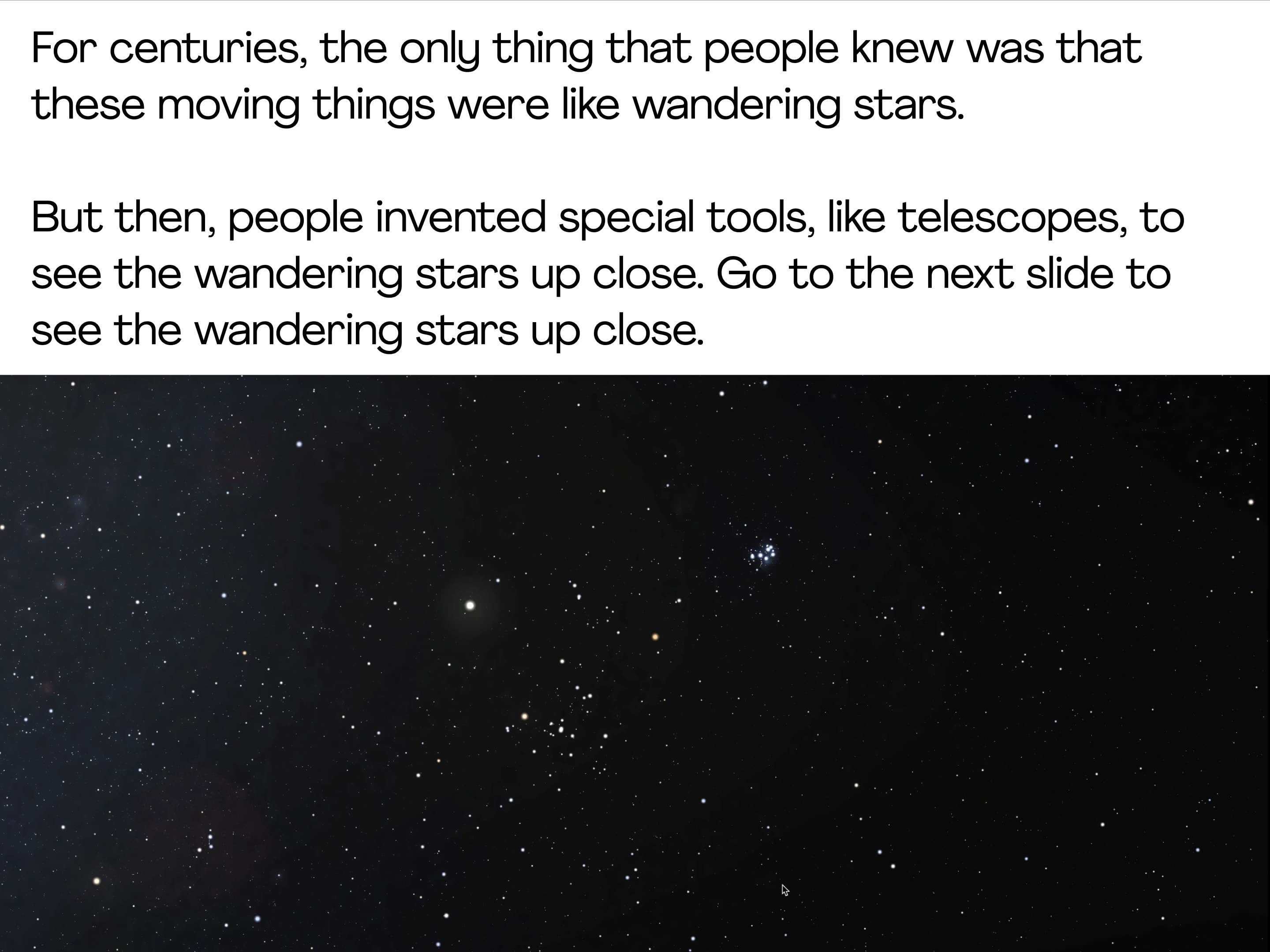
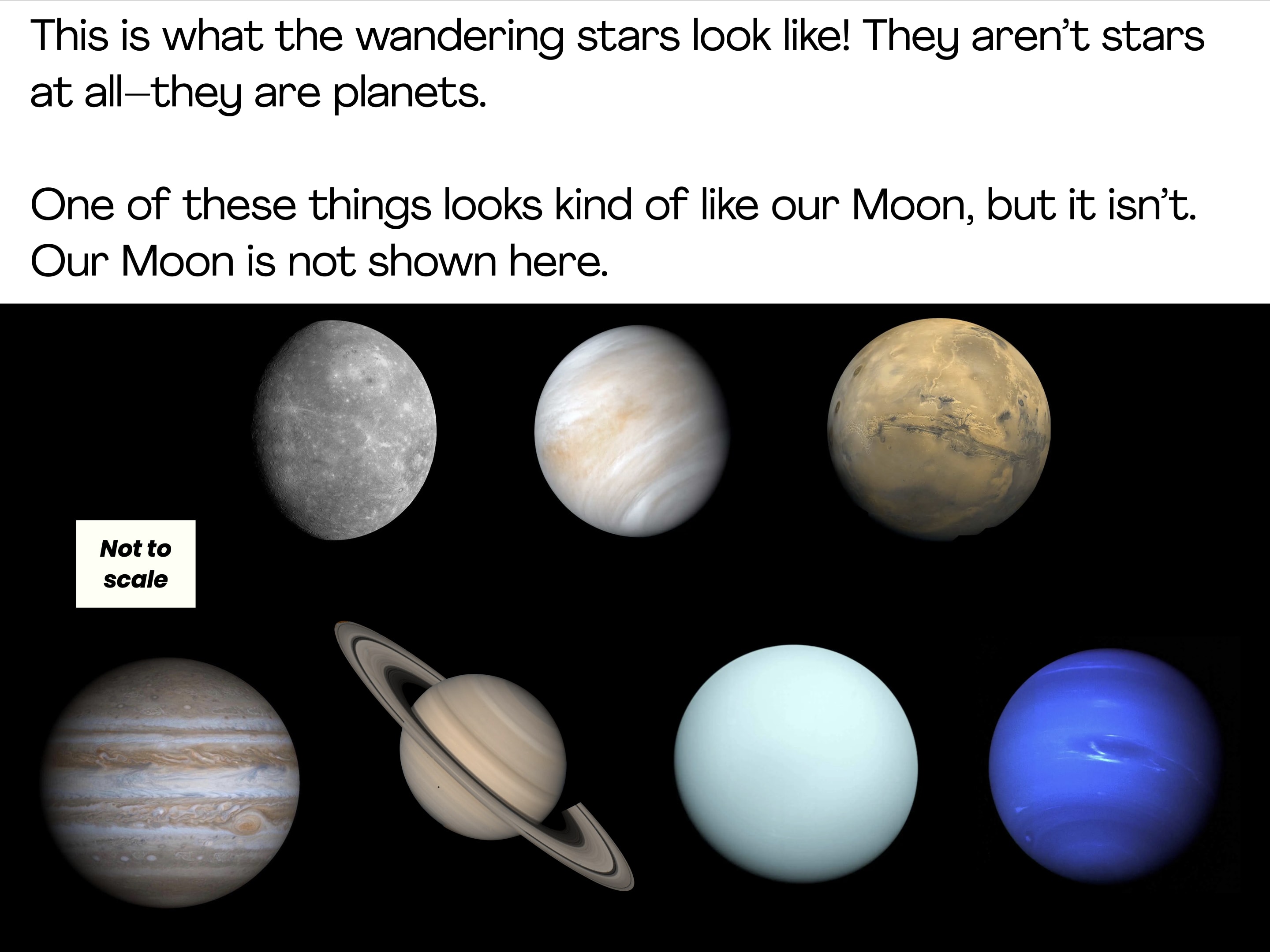
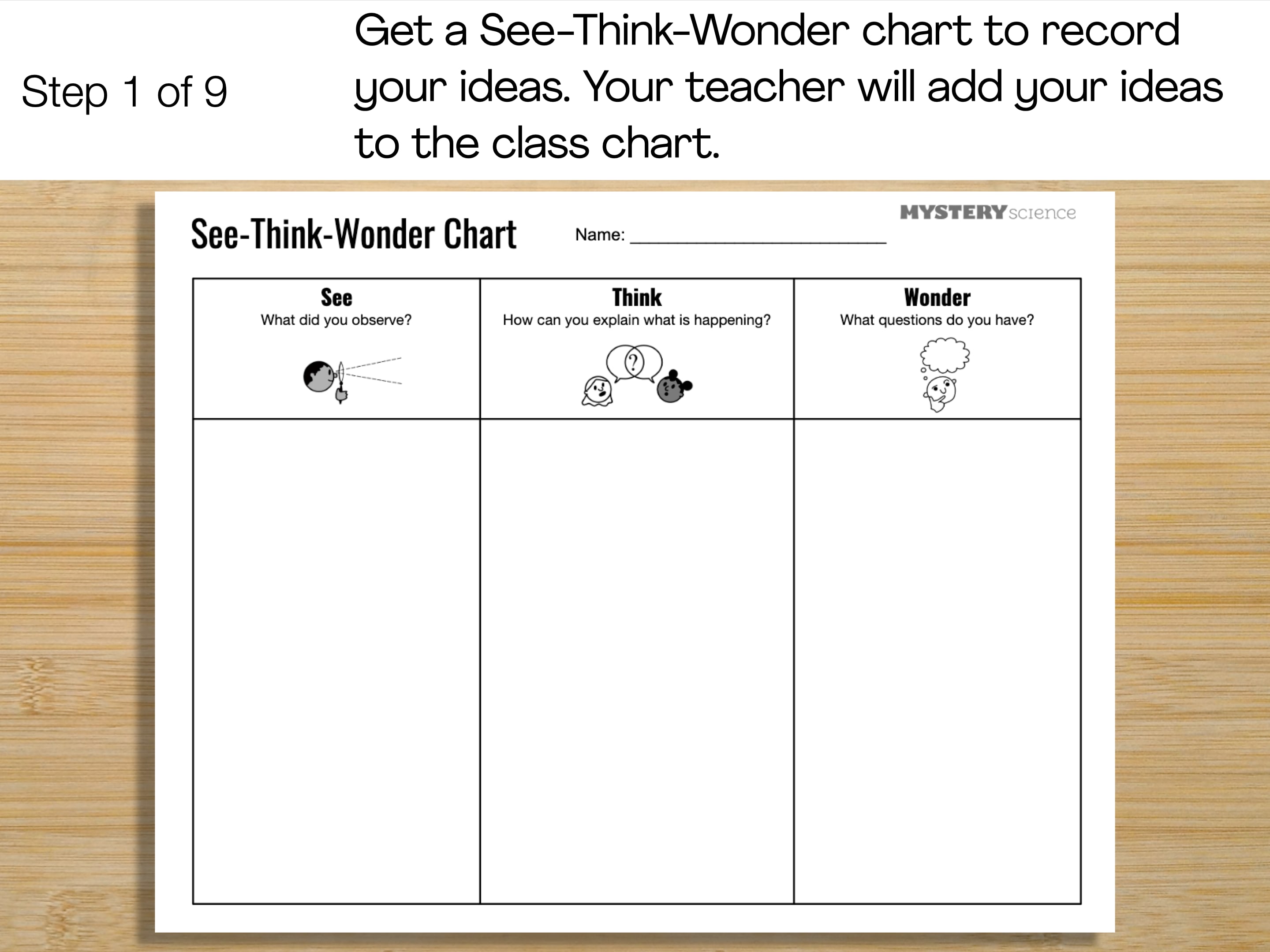
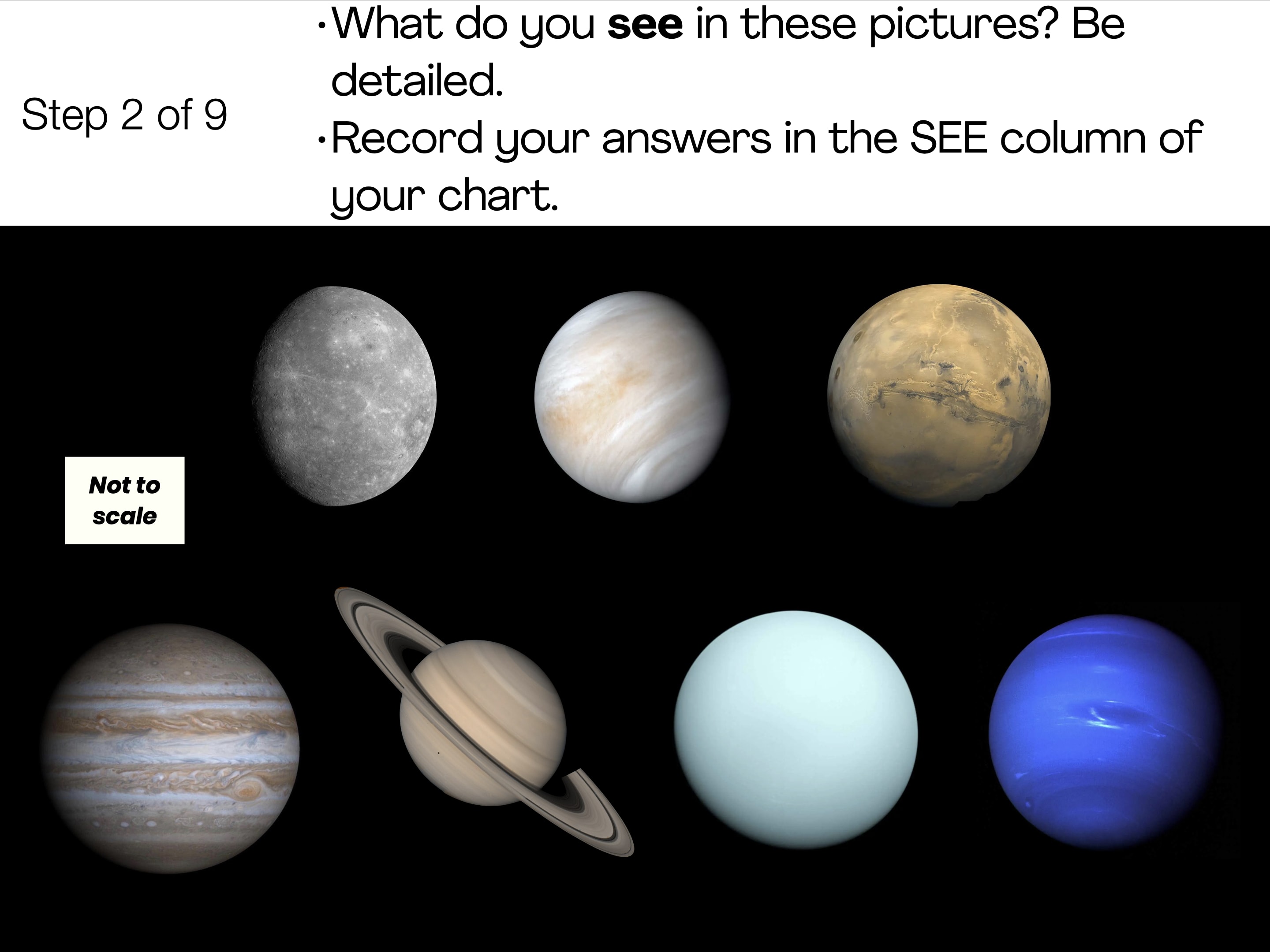
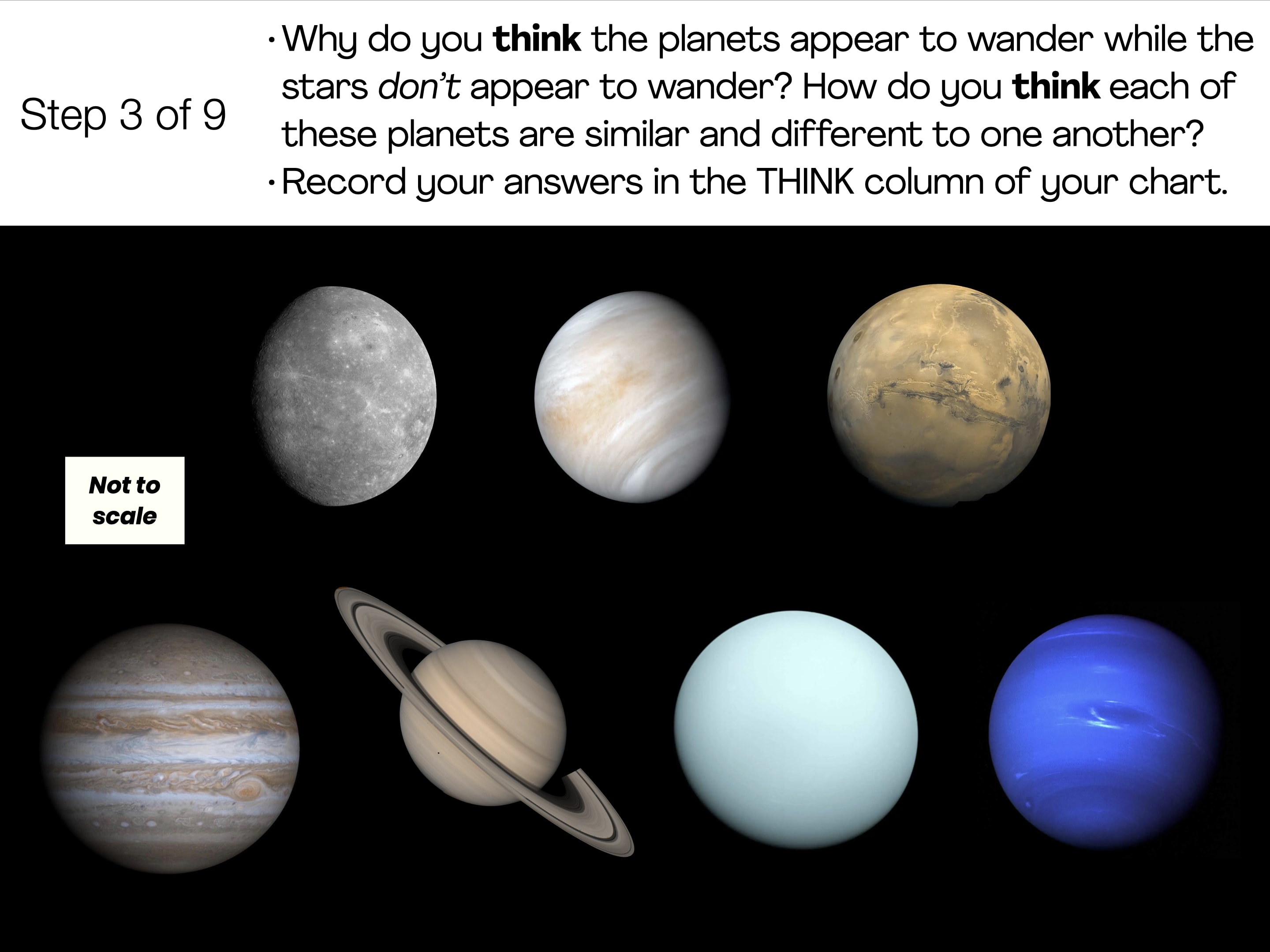
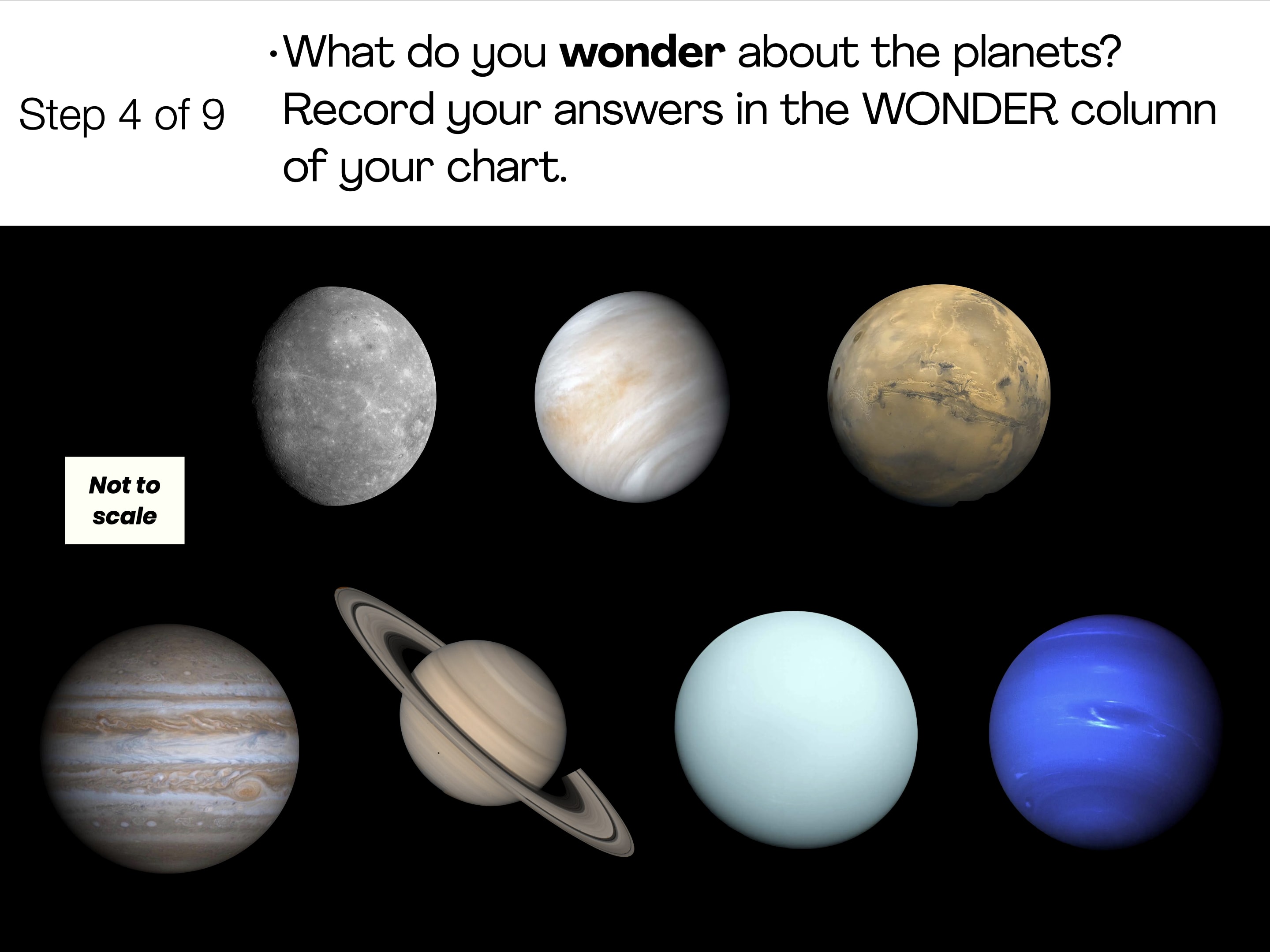
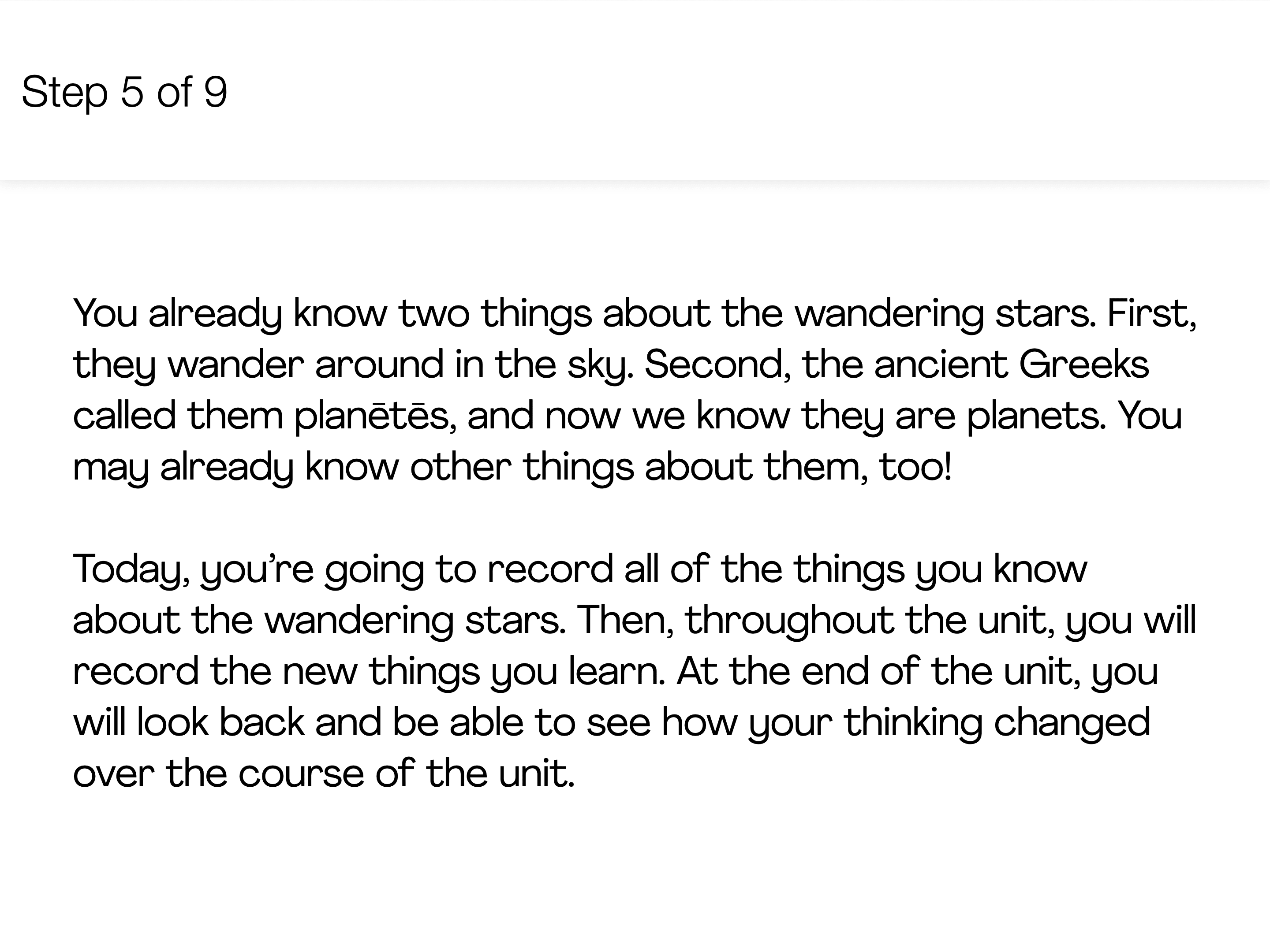


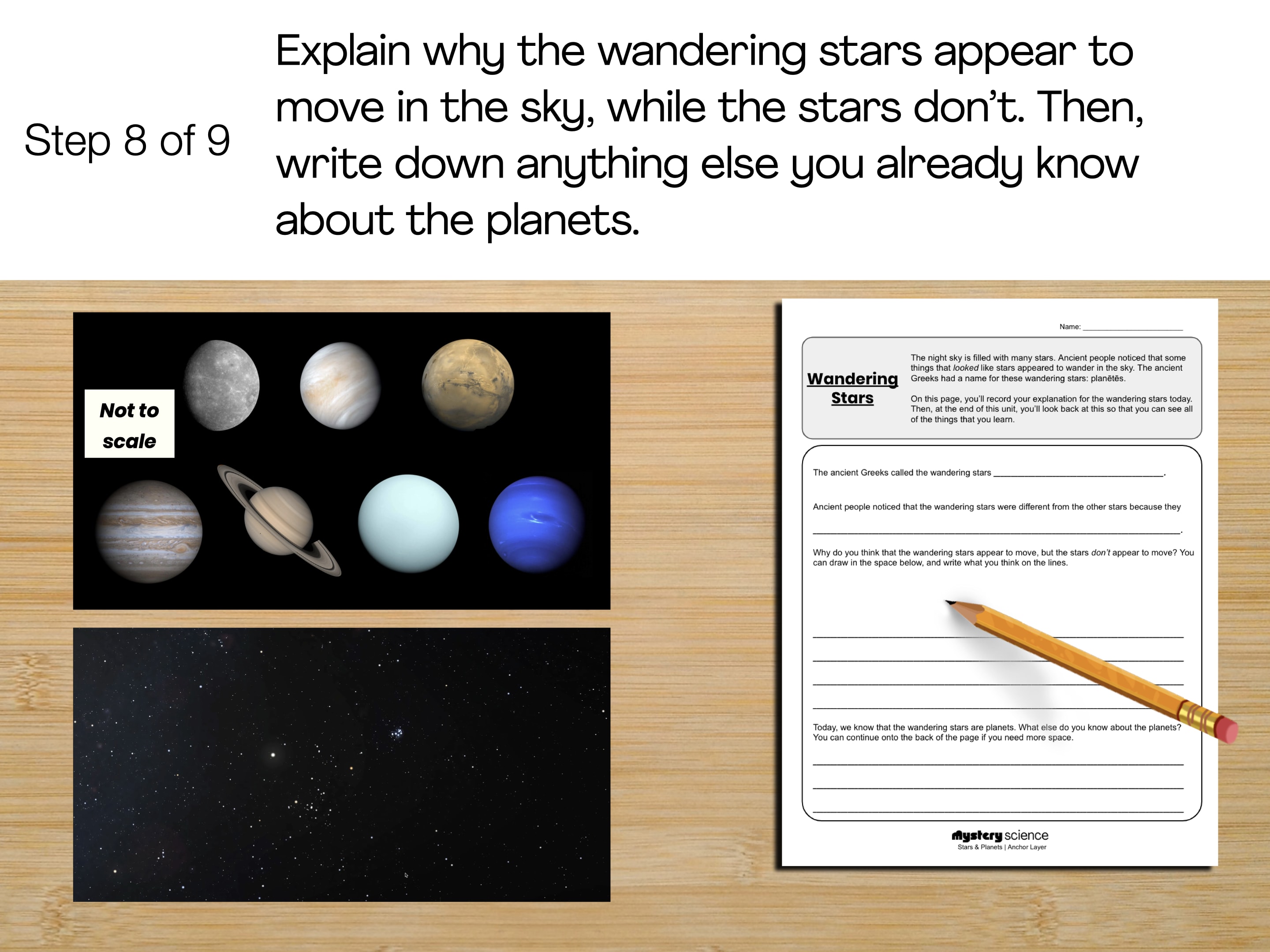
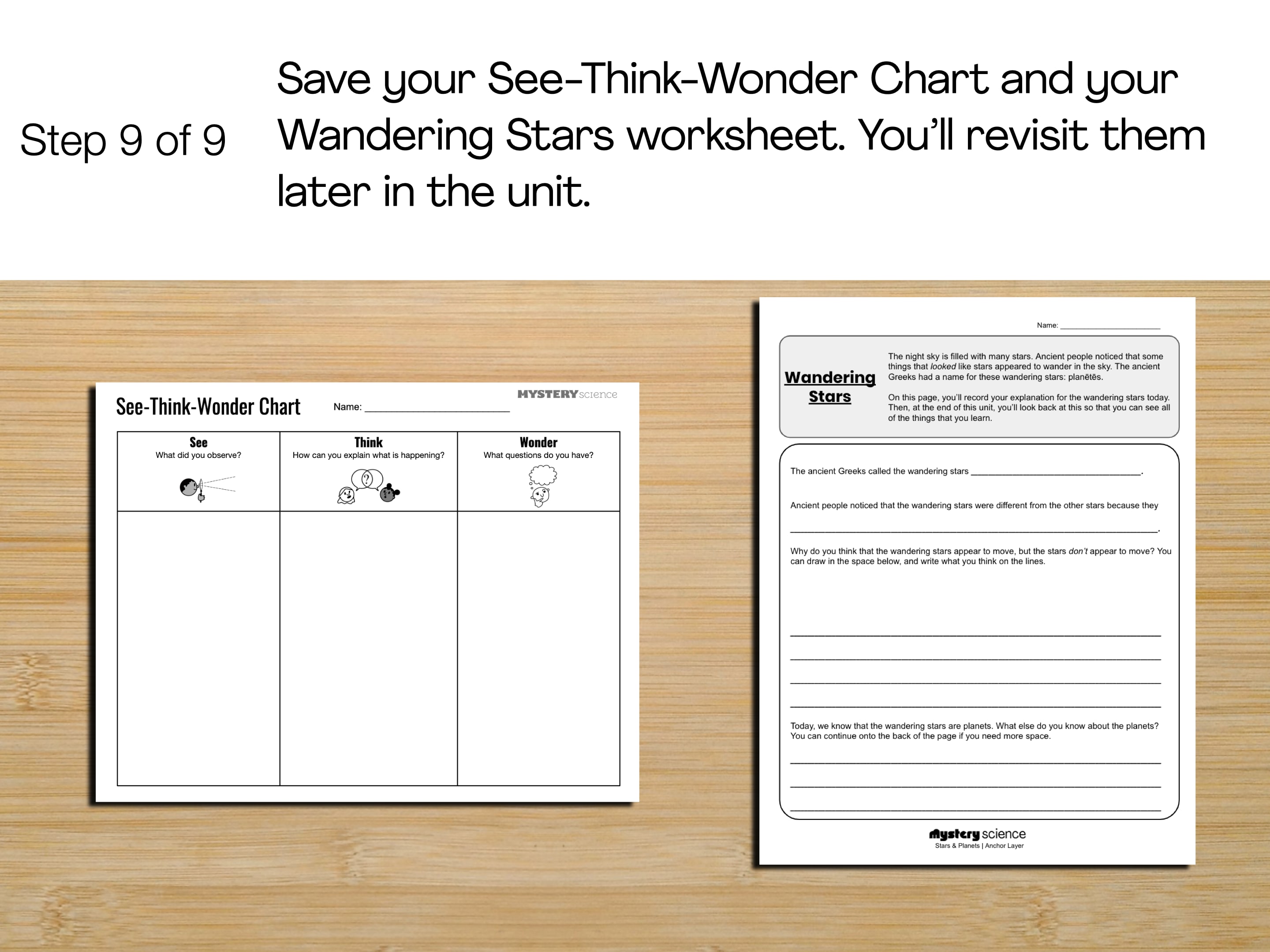
It's time to do some investigations! In this unit, you'll learn all about the wandering stars. You’ll learn why they move differently from the other stars in the night sky, and you’ll learn how they are similar and different from one another.
At the end of the unit, you will use everything you've learned in a fun project.
Have fun, and stay curious!


